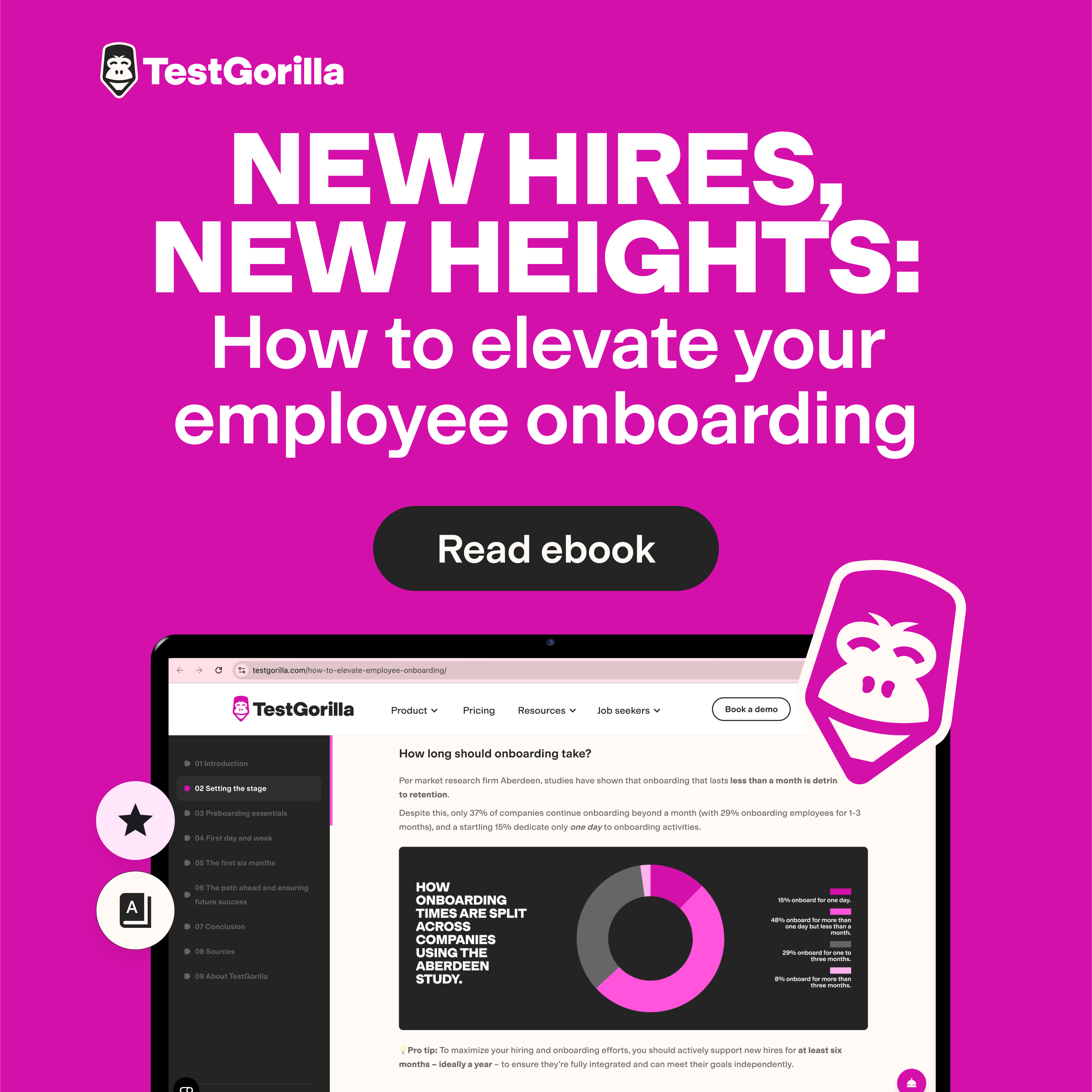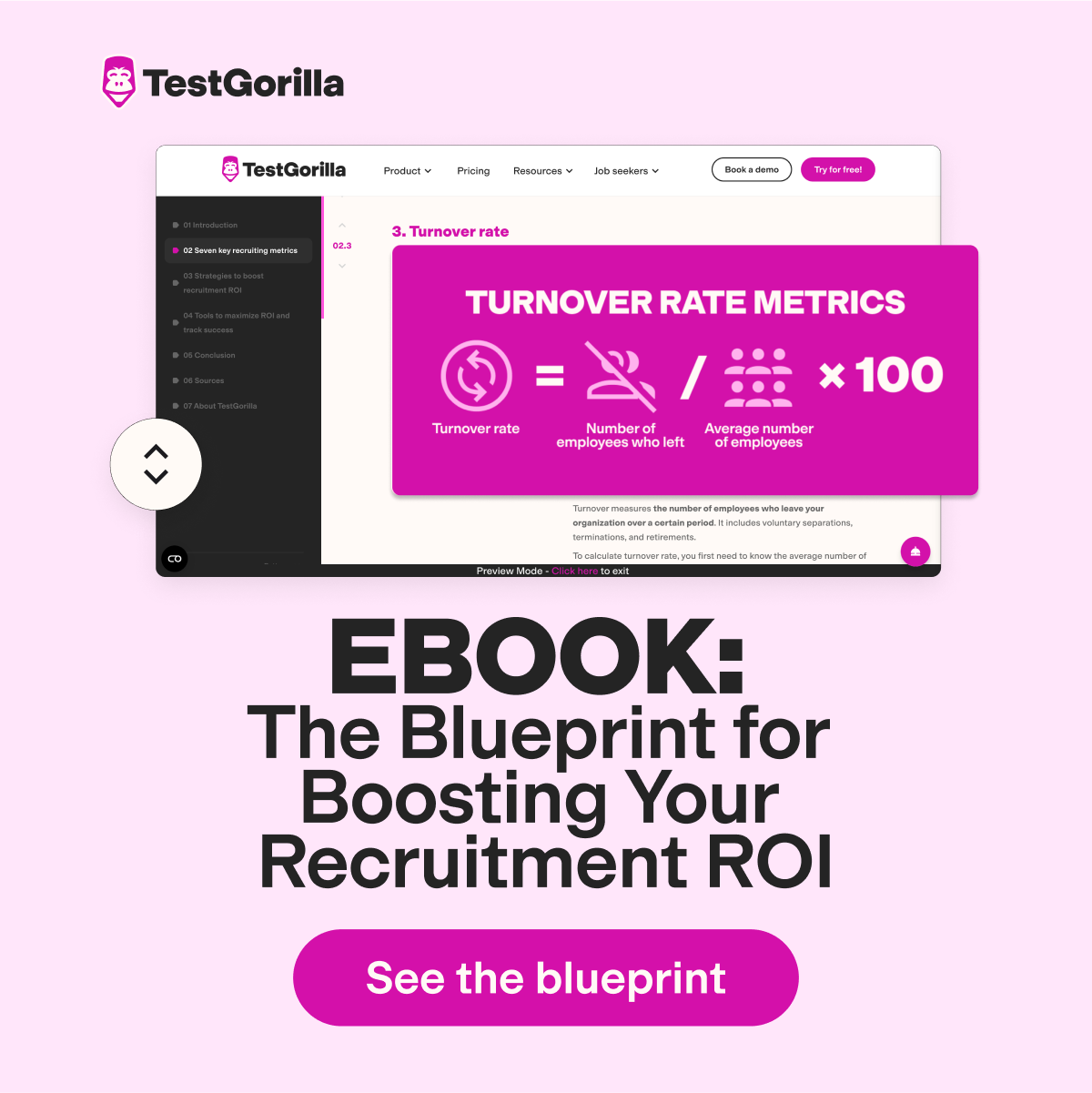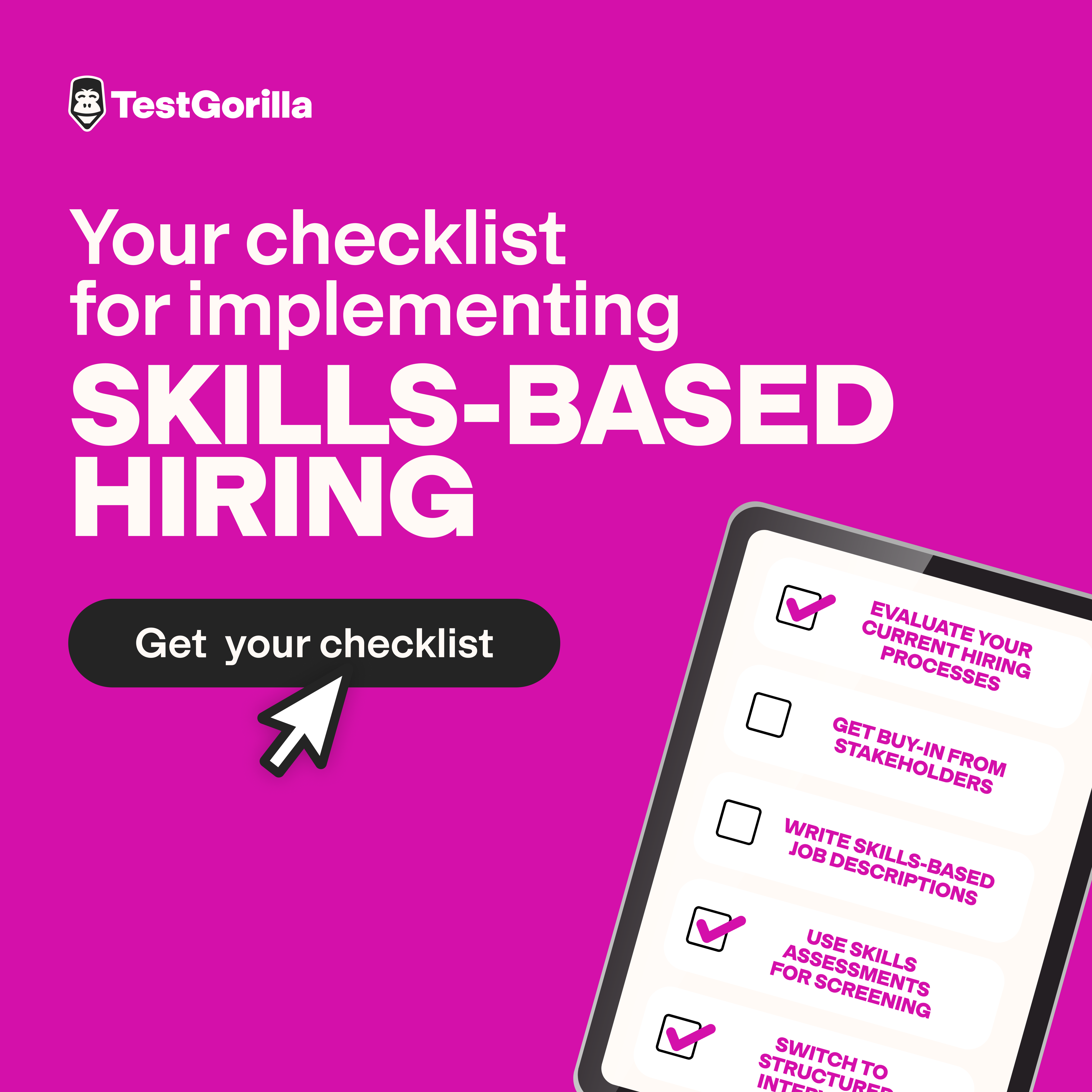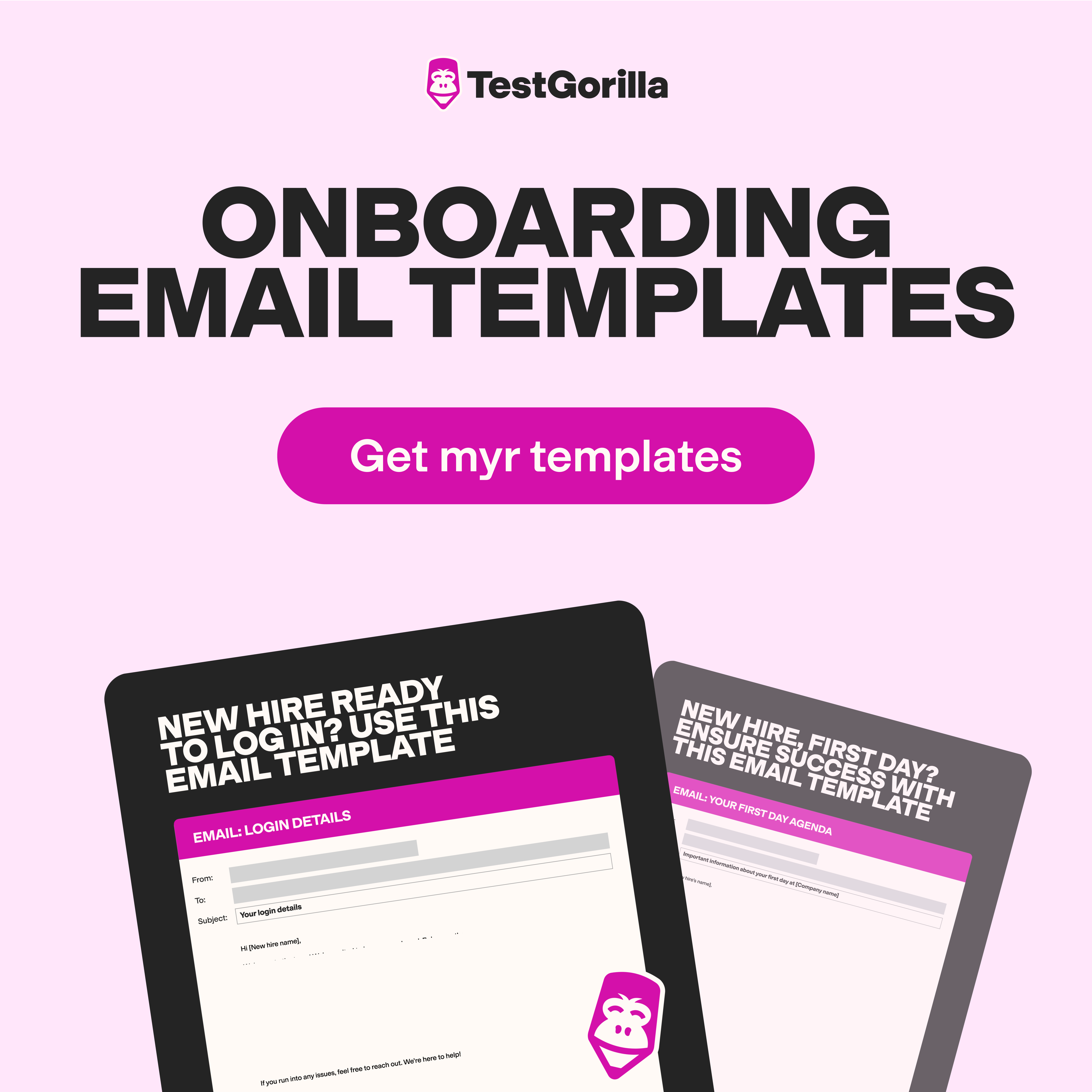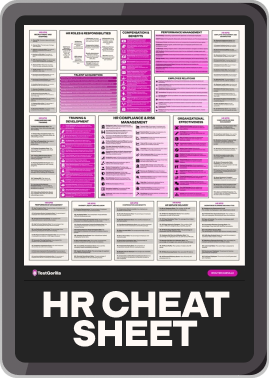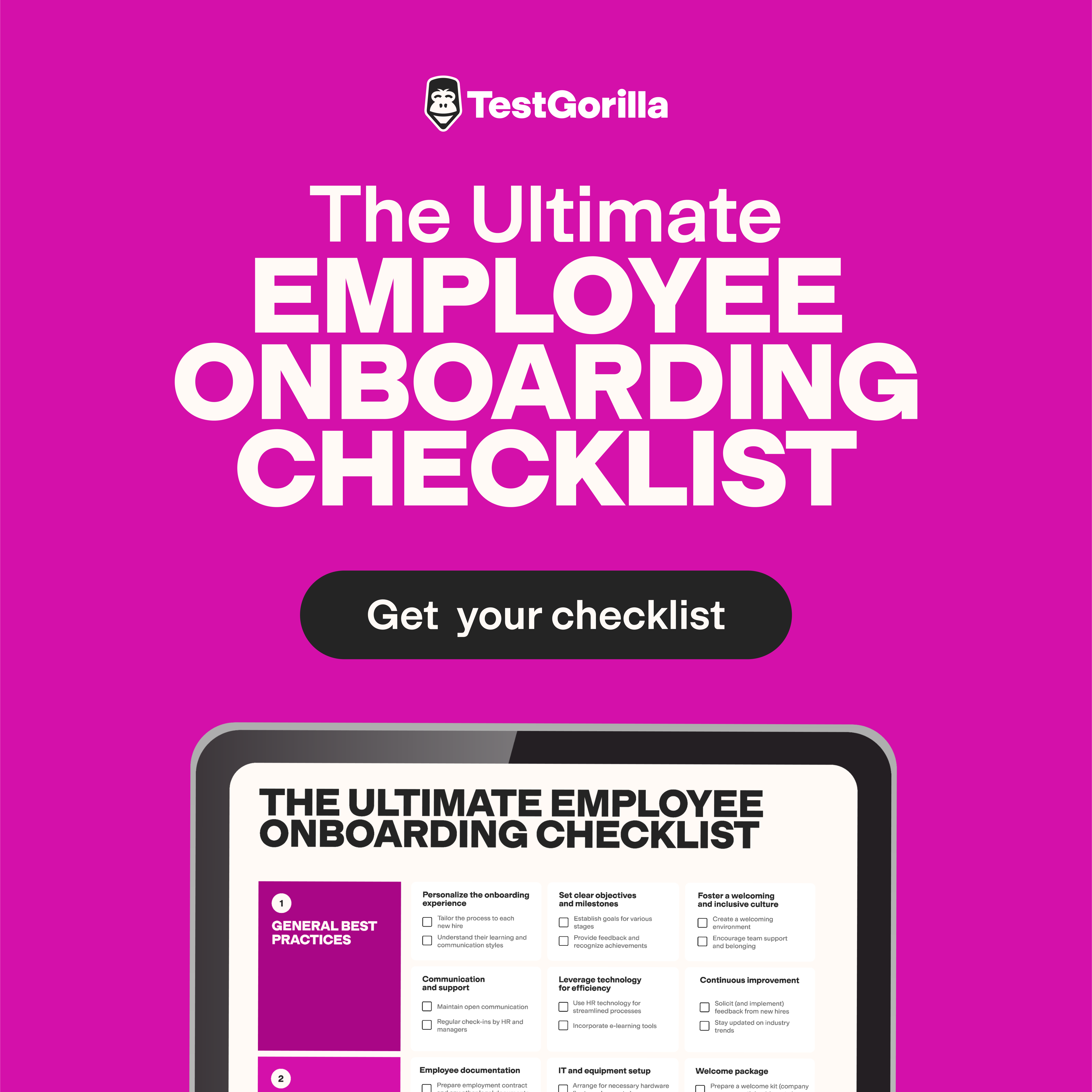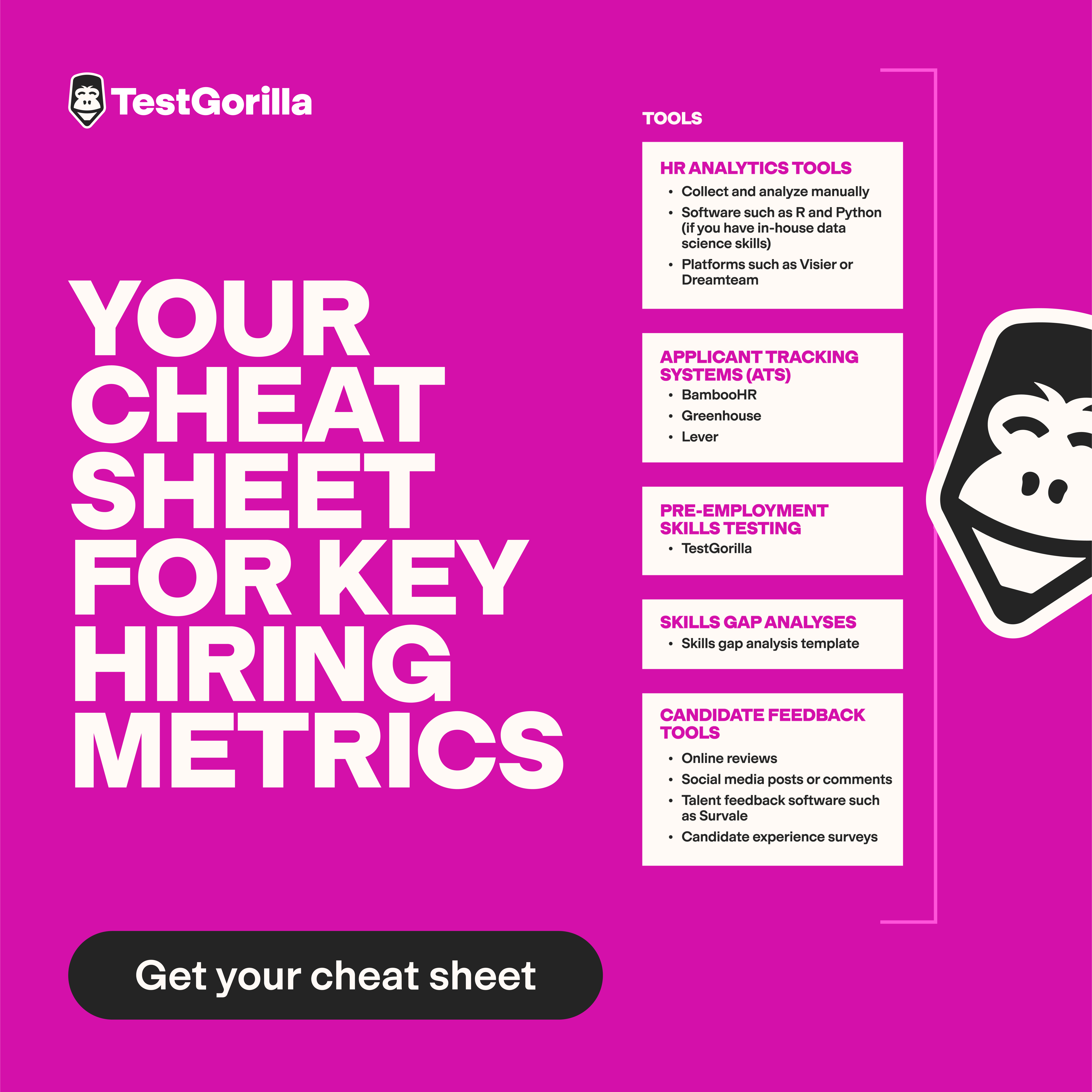Hiring for entry-level roles might seem straightforward, but if your new team member can’t communicate clearly from day one, it can lead to costly misunderstandings, slow onboarding, and frustrated colleagues.
Language proficiency might seem like a given for entry-level roles, but many employers struggle to assess it accurately in candidates.
In this article, we’ll break down what A2 language proficiency means, which roles it suits, and how to test for language proficiency during hiring effectively – before a poor decision costs you time and money.
Understanding A2 language proficiency
The classification “A2” comes from the Common European Framework of Reference for Languages (CEFR), which language learners use to track their progress and define the scope of their current abilities in a target language. The scale has six levels: A1, A2, B1, B2, C1, and C2. Since A2 is the second level, language learners' skills at this level are still relatively basic.
An A2 learner can understand and use basic phrases, communicate in direct exchanges, and handle routine matters. While A2 learners don’t have the same degree of fluency as native speakers, they can communicate as long as the conversation is slow, simple, and familiar.
That said, they’ll struggle with complex situations, and they’ll spend a lot of time searching for expressions in an obvious manner.
A2 learners typically understand vocabulary related to daily life, personal information, shopping, and local geography. They also have the basic grammar patterns to describe and discuss simple opinions related to these familiar topics. However, they may struggle with complex subjects and finer shades of meaning.
So, how do A2 learners fare in the workplace?
According to Melton Language Services:
"Even at an A2 level, candidates can contribute to workplace communication by handling basic email exchanges and understanding work-related documents. This ensures they can survive in certain roles while gradually building their language skills."
The role of A2 language proficiency in hiring
You should assess candidates’ language proficiency during the hiring process to ensure they possess the basic communication skills necessary for performing workplace tasks and other professional purposes. This helps new hires have smoother interactions with colleagues and customers.
Candidates with an A2 language level are typically hired for entry-level roles with a basic level of job responsibility that aligns with their language level. This basic level of language proficiency is good for roles with a limited scope of work, routine tasks, and no need for having detailed discussions or understanding implicit meaning.
Roles that work well for A2 level speakers include:
Retail and customer service
Basic hospitality greeting roles
Warehouse and operational assistants
Entry-level admin and support
For example, an A2-level employee with a customer service job at Subway must know specific vocabulary for types of bread and fillings. They’ll have the same simple conversations repeatedly throughout their employment. If a customer has a very unique order or wants to make a complaint, the employee can direct the customer to a manager with a higher language proficiency level.
The best insights on HR and recruitment, delivered to your inbox.
Biweekly updates. No spam. Unsubscribe any time.
Assessing A2 language proficiency in candidates
There are several options you can choose to test someone’s language ability.
Traditional language testing methods
Traditional testing methods vary in how and what they test.
Standardized CEFR tests
The standardized CEFR assessments evaluate reading, listening, writing, and speaking skills. They use a wide range of question-and-answer variations like multiple choice, fill-in-the-blank, or audio tests.
Examples of these standardized tests are IELTS (International English Language Testing System) and TOEFL (Test of English as a Foreign Language). These tests are used by employers, universities, and immigration systems to judge a person’s English level.
To achieve an A2 level in IELTS, a score of 4.0-4.5 is needed, while a score of 31-34 is needed for the TOEFL test.
Interviews
Other methods include phone or face-to-face interviews with structured interview questions. These allow you to get a feel for someone’s ability to carry on a simple conversation at the A2 level.
That said, interviewing all candidates to test language proficiency is costly and time-consuming.
Roleplay scenarios
You can also test people through simple, real-world roleplaying scenarios (like customer orders) – for instance, during phone screenings, face-to-face interviews, or job simulations. This helps them get out of the “test environment” and put their language knowledge into practice.
While these scenarios show a candidate’s ability within context, the results you get from them (and interviews) are subject to unconscious bias, making this kind of testing less reliable than other forms.
This method is best used with candidates who have already passed a standardized test. This way, you already have an understanding of their language ability and can use the scenarios to delve into their strengths and areas for improvement.
Self-assessment
A final traditional method is self-assessment questionnaires. These are easy to implement but often provide inaccurate or inflated ability predictions.
TestGorilla’s A2 language tests
TestGorilla’s A2 language tests are designed specifically for candidates. They’re:
Scientifically validated – They’re developed by language experts and aligned with the CEFR framework to ensure consistency. A2 tests focus specifically on lower intermediate skills like following simple instructions, answering common questions, and identifying key information.
Multi-skill testing – The tests cover listening, speaking, and reading comprehension within real-world contexts to ensure the candidate can successfully apply their skills in practice.
Job-relevant – Scenarios reflect the type of situations the new A2-level hire will face to show that they can follow instructions, complete routine tasks, communicate with basic phrases, and discuss familiar matters.
Fair and objective – The results are based on what the candidate can actually do, regardless of their qualifications.
Integrating A2 assessments into the hiring process
To successfully implement A2 language assessments into your hiring process, follow these best practices:
Ensure that your role truly requires A2 proficiency
Before hiring, determine whether A2 language proficiency is genuinely suitable for the role or whether a higher level of communication is needed.
To assess the right fit, begin with a competency mapping exercise. Outline the communication tasks involved in the role, then ask:
Are tasks highly predictable and language-light?
Will most conversations follow a set script or involve the same vocabulary?
Or does the role involve unexpected interactions or require staff to think on their feet?
If the job’s tasks are more complex, perhaps you need a higher proficiency level – like B1 proficiency.
Clearly state the A2 language requirement
Clarify that you need A2 language proficiency to prevent people who don’t meet this requirement from applying. This should be prominently stated in your job description under “Job Requirements” or “Skills Needed.” Let candidates know that they’ll need to use the target language in regular interactions.
This sets accurate expectations for both you and the new hire.
Assess language skills early
If language proficiency is a core job requirement, give candidates the A2 language test early. This will enable you to disqualify candidates who don’t meet this requirement – so you don’t waste their time or yours.
Combine language tests with other skills tests
Use a platform like TestGorilla and combine language proficiency tests with other job-related tests, such as the customer service test. By combining up to five different tests, you can create assessments that test for all the skills needed for your role.
Ensure a smooth testing experience
Choose a testing platform that’s easily accessible on mobile and keeps tests short and relevant to increase response rates. For instance, TestGorilla is available on both mobile and desktop and offers short and engaging assessments – for instance, our English A2 test takes just ten minutes.
Understand scores and benchmarks
Hiring managers must know how to interpret language test results. Depending on the specific requirements and training offered, someone who has not quite passed the A2 level test may still have an appropriate level of fluency for the role.
For example, they may be applying for a customer service role but not currently have the vocabulary for the job-specific interactions – but if they’re enthusiastic, possess all the necessary customer service skills, and have some A2 level skills, you might be able to offer them language proficiency training.
To understand scores and benchmarks, use a testing platform that offers guides to analyzing results.
Identify the ideal A2 candidate for your team with TestGorilla
A2 language proficiency represents a functional, basic level of communication — ideal for roles involving routine tasks, repetitive conversations, and predictable work environments.
To hire the right person, make language testing a foundational part of your screening process:
Clearly define if the role needs an A2 language level
Use unbiased, skills-based tests to assess candidates fairly
Keep the process accessible and simple
TestGorilla makes this simple with mobile-friendly, CEFR-aligned assessments that reflect real workplace tasks.
Get started today by signing up for a free TestGorilla account or booking a live demo.
You've scrolled this far
Why not try TestGorilla for free, and see what happens when you put skills first.









